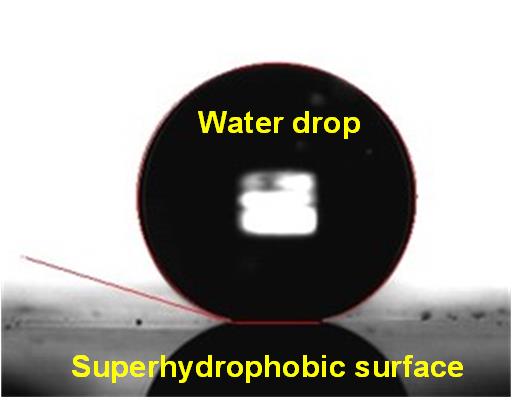New research from Syracuse University shows how nanochannels, oil and candle soot could provide a water repelling surface with numerous applications.

Surfaces that allow water or other liquids to roll right off are uniquely present in nature, such as on lotus leaves as well as on few aquatic insects, enabling them to walk on water or breathe under water by trapping a layer of air on their bodies. Such superhydrophobic surfaces can be helpful in a variety of engineering applications, ranging from coating of windshields and surgical tools, to steam turbines and condensers in power plants, and to improved hydrodynamics of submarines and ships.
Despite advancements in the development of artificially engineered superhydrophobic surfaces, durability and regenerative aspects of such surfaces remain elusive. Harsh working conditions including extreme exposure to water or humidity can deteriorate such surfaces especially after extended under-water usage.
Mechanical and aerospace engineering doctoral student Durgesh Ranjan and Professor Shalabh C. Maroo have developed a new approach for creating a durable superhydrophobic surface by first plasma-treating a fabricated porous nanochannel geometry on a silicon substrate followed by infusion-depletion of silicon oil and coating a layer of carbon derived from candle soot.

“We are able to engineer a superhydrophobic surface which is durable against high-speed water jets, non-sticky to many liquids ranging from water to honey, and stable under water for months,” says Maroo.
Research from Ranjan, Maroo and An Zou was published in the January 2023 issue of the high impact Chemical Engineering Journal and the technology is also patent pending. Their surface is capable of maintaining water contact angles of over 160° and roll off angle less than 5° even after undergoing 20 different tests, including chemical resistance to seawater and various solvents, high temperature exposure up to 570oF, condensation heat transfer, self-cleaning using fine all-purpose flour, frosting-defrosting cycles with ice, concentrated solar radiation exposure, and compatibility with organic products like honey, milk and syrup, thus exhibiting potential real-world applications.
